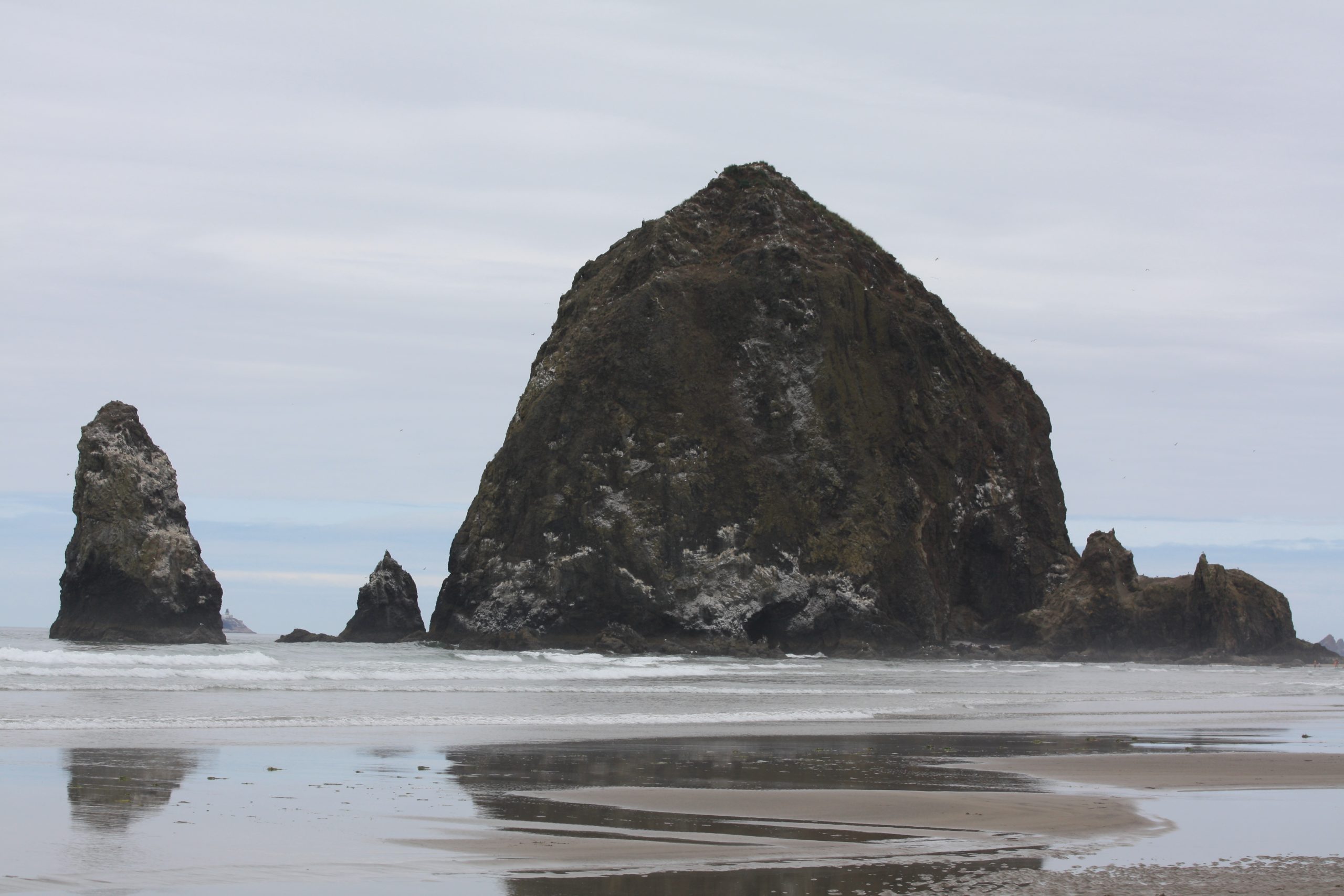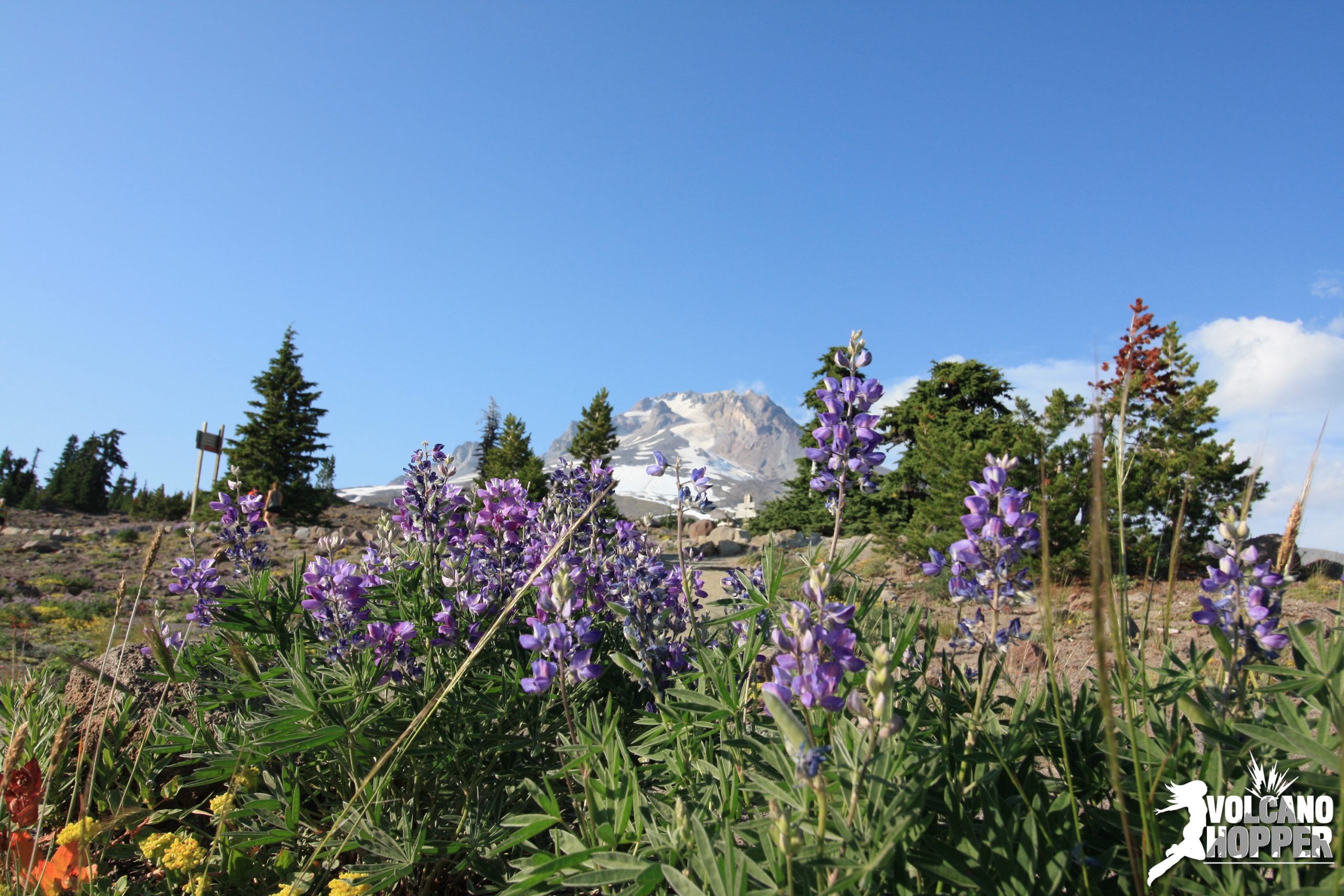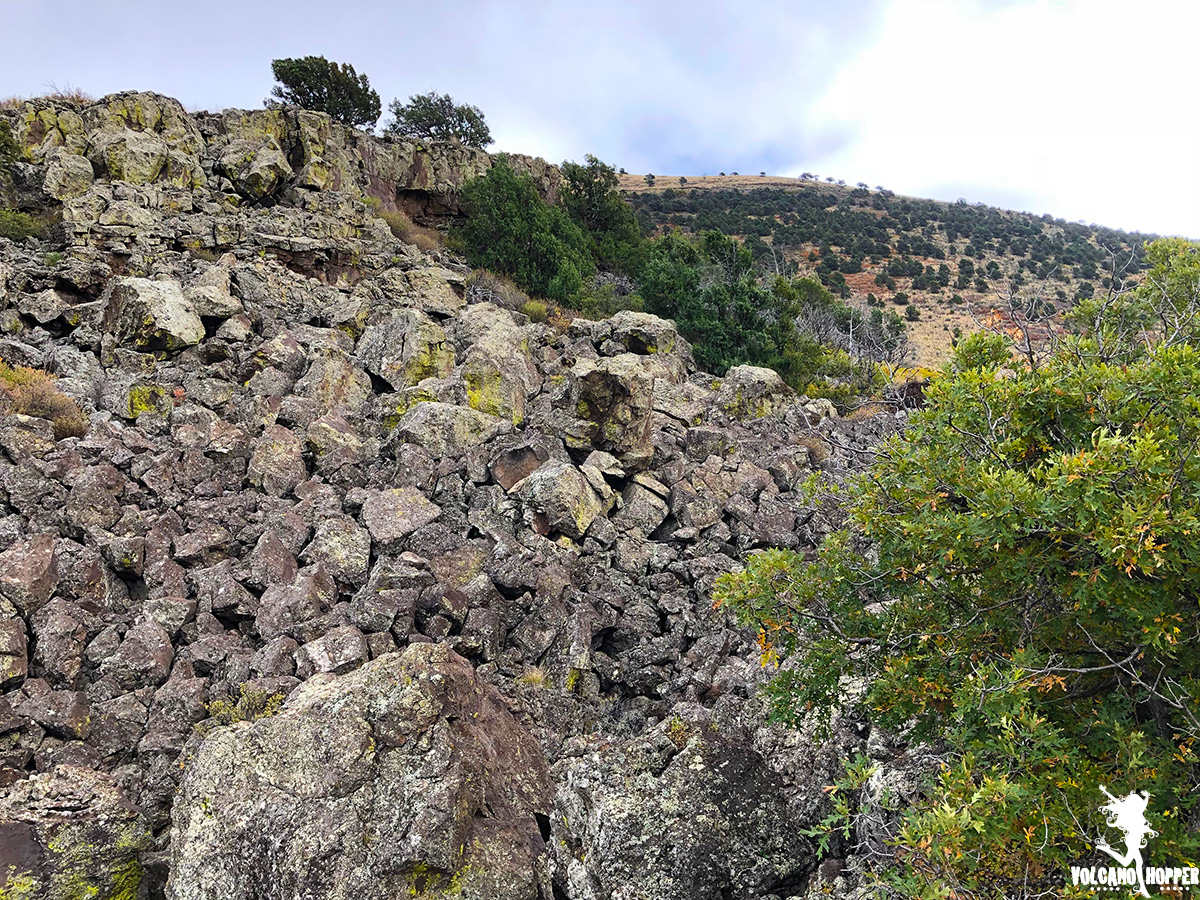Haystack Rock
The Pacific Ocean is absolutely magical. One never knows what they’ll discover on its shores or in its rich blue depths. There is something about the steady crash of the waves against the shore that relaxes and envigorates the soul. Our Base Camp is nowhere near the ocean, or any significant source of water, so we made tracks for the beach while we were in Oregon this summer. We didn’t choose just any beach, however. We chose Cannon Beach, Oregon for sentimental reasons and ended up finding a volcanic treasure: Haystack Rock.
The Not-so-Boring Volcanic Field
Put that yawn away! The Boring Volcanic Field is far more exciting than it sounds! Where and what is this Boring Volcanic Field, and who gave it such an unexciting name? Buckle up – let’s go investigate!
Heading eastbound out of Portland, your eyes will either be fixed on traffic or on magnificent Mount Hood. Standing at 11,250’ above sea level, the stratovolcano certainly dominates the landscape. If you’re kicking back in the passenger seat, you’ll notice the enormous hills that just out of the landscape like molehills.
As you turn up Highway 26 toward Mount Hood, you’ll soon find yourself driving through the tiny town of Boring, Oregon.
The Cascades Volcanoes
The Pacific Northwest has a vibe all of its own. Trendy metropolitan cities, pulsing with their own energy. Thick forests of vibrant green and field strewn with wildflowers. Crashing ocean waves. And magnificent volcanoes that command the attention of the entire landscape.
The Cascade Arc is home to 20 very big and badass volcanoes, most of which are composite volcanoes, and over 3,000 smaller vents. Volcanic fields dot the landscape of the Pacific Northwest and have made it what it is today.
The Moon is Lava!
VITAL STATS
Name: Earth’s Moon
Eruption Status: Dormant?
Last Eruption: Less than 100,000 years ago
Location: 238,900 miles out in space

Do you remember playing “The Floor is Lava” when you were a kid? If not, you should definitely start a game right now. Wherever you are. It’s a blast! But let’s play a different game today…
The Moon is Lava!
It certainly looked as though this might be the case last Sunday evening during the lunar eclipse. The usual pearly glow of the full moon (a super moon in this case) was replaced by a deep red glow as the Earth blocked the sun’s light. Lunar eclipses like this only happen when the Sun, Earth, and Moon are in a straight line. Earth completely blocks the sunlight from the moon, and what light does refract around the Earth’s atmosphere gives the moon a bloody red appearance. Phew! So that’sall it was? Good. But let me tell you a little secret, my friend. The moon IS lava.
Capulin: The Boca Trail
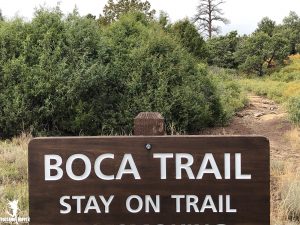
VITAL STATS
Name: Capulin
Type: Cinder Cone
Eruption Status: Extinct
Last Eruption: Approximately 60,000 years ago
Location: 36.7811° N, 103.9695° W
Northeastern New Mexico; Raton-Clayton Volcanic Field
We coasted down the volcano road, enjoying our descent from Capulin’s summit. The clouds had finally lifted and myriad volcanoes now popped up from the dusty New Mexican landscape. My partner in crime and I headed in to the Visitor Center for a quick break and a chat with the friendly and knowledgable park rangers. They offered us great information about how Capulin became a national monument in 1916 and how summit road was covertly created in 1925 so that the first Model T’s could putter to the top. Our ranger friends even were able to answer questions about the volcanism of the area. They confirmed that what we spotted on the lava flow trail earlier in the day was indeed andesite – which gave this volcano its explosive past.
Itching to get back outside and explore the Boca Trail, we drove back to the same parking lot where the Lava Flow trail started. Instead of heading South and sweeping through the volcano’s second lava flow, this trail heads north and winds between the cinder cone and the third lava flow. But here, we found something special. We found the vent from which each of these lava flows emerged.
Capulin: The Summit
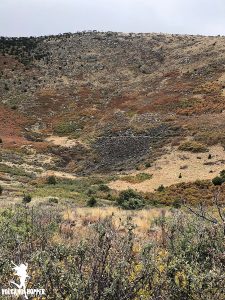
VITAL STATS
Name: Capulin
Type: Cinder Cone
Eruption Status: Extinct
Last Eruption: Approximately 60,000 years ago
Location: 36.7811° N, 103.9695° W
Northeastern New Mexico; Raton-Clayton Volcanic Field
The clouds that enshrouded Capulin’s cone finally began to break around mid-morning. We raced to the summit to see what had been hidden behind the thick mist all morning. What we found was breathtaking.
Capulin’s summit crater is perched over 1,300 feet above the surrounding plains, and the drive to reach it is nothing short of intimidating. If you’re not driving, take a peek out the passenger side window. There are no guardrails and the view is straight down. This cone has virtually no slope. Not intimidating…not at all…
Capulin: The Lava Flow Trail
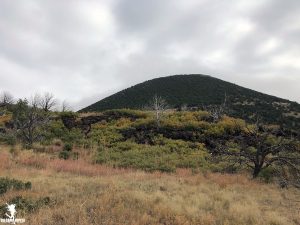
Vital Stats
Name: Capulin
Type: Cinder Cone
Eruption Status: Extinct
Last Eruption: Approximately 60,000 years ago
Location: 36.7811° N, 103.9695° W
Northeastern New Mexico; Raton-Clayton Volcanic Field
Capulin volcano has 4 lava flows – three of which are absolutely massive. They each started from a vent at the base of the volcano, which has left the stunning cone shape intact. As we waited for the clouds at the summit to lift, we decided to take a hop down the Lava Flow Trail.
This trail is a 1 mile loop through the second lava flow. It only scratches the surface; this flow extends over 2 miles down toward Highway 87! We were anxious to get our boots on the ground and go exploring. So off into the silent, misty morning we went.

